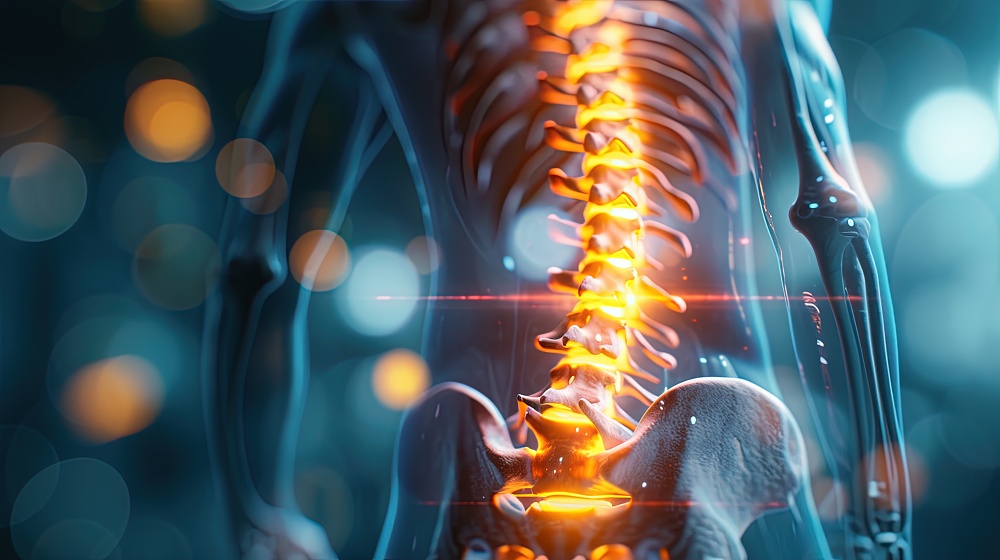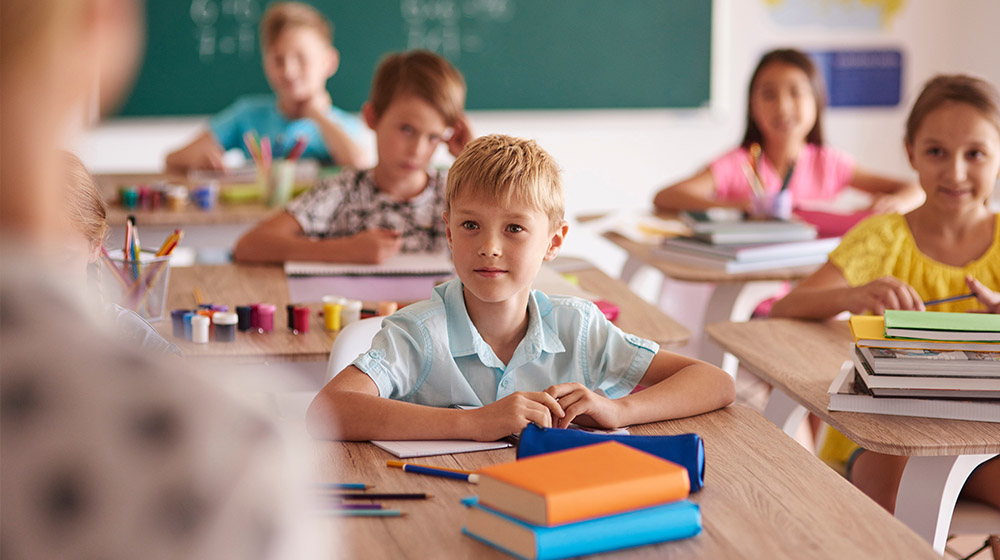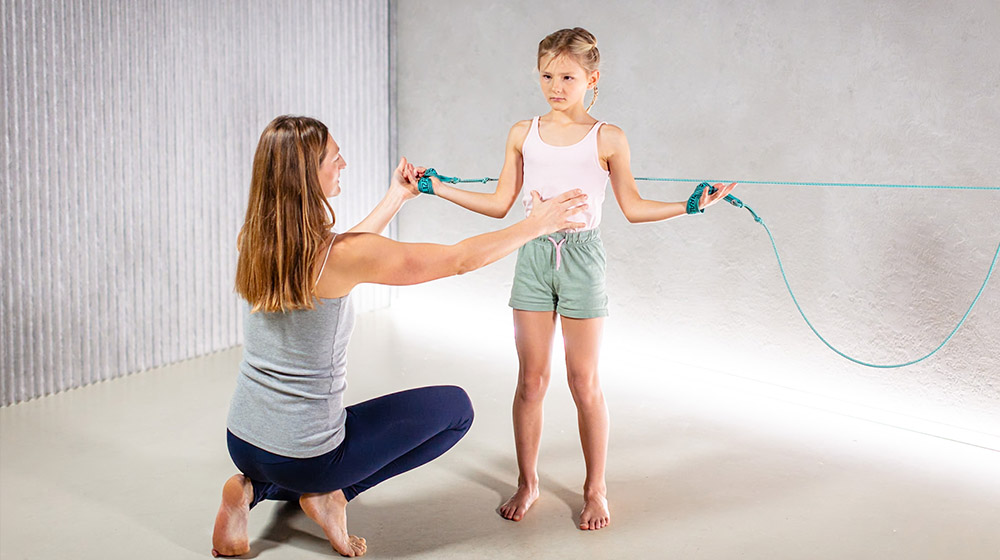Scoliosis study in children 2023
A research study on scoliosis in children, conducted in 2023 by MUDr. Kateřina Smíšková and her colleagues, showed that, that more than 42% of primary school children have some kind of spinal rotation. The research was conducted in eight primary schools across the Czech Republic and over 2,000 children from first and second grade were examined. The youngest children were the most numerous group with 3° rotation in the spine, and they are a high-risk group for future patients with large scoliotic curves. These results confirmed the necessity to pay attention to the problem of scoliosis and faulty posture in children, especially by education, prevention and also by properly chosen treatment.
Number of research pupils
2,138 pupils from primary schools across the Czech Republic took part in the research
2138
Pupils
Number of schools
In 8 schools in the Czech Republic, pupils were tested using the Adams test and a scoliometer
8
Schools
Average age
The age of the children who participated in the research was 6 to 15 years old
10.5
Average age
Spinal curvature
More than 42% of children have some spinal curvature and rotation greater than 3°
42 %
With spinal curvature
What is
scoliosis?
Scoliosis is a disease of the spine that arises from various causes. It is the curvature and rotation of the spine in unnatural directions.
If the curvature reaches 20° Cobb, a corset is indicated. If the curvature reaches 40 degrees Cobb, the patient is indicated for surgery. Patients with this diagnosis can be treated successfully with conservative rehabilitation techniques, such as the Spiral Stabilization method. More about the treatment here
First steps

Diagnostics
How to detect scoliosis?
How to proceed?How can I possibly find out?
Every child requires our attention as they grow. To ensure that everything is in order and the child develops healthily, we monitor his or her motor skills.
Regular check-ups with the pediatrician are not a sufficient guarantee that the child is free of scoliosis in this regard. In order to make sure, we perform a simple diagnostic procedure on an ongoing basis that will give us more conclusive evidence that the child does not have scoliosis.

Treatment
I have scoliosis
How to proceed?I have or my child has scoliosis and I want to learn more about how to work with it
If you think your child or you have scoliosis, there are a number of things you should learn about it as soon as possible.
For scoliosis to be well treated, it must be caught as early as possible. The earlier it can be detected, the better the child's chances of controlling it. The child's young age allows the body to cope with scoliosis.

Prevention
I educate others
How to proceed?I'm an educator or therapist and I want to learn more
As an educator, you have the opportunity to spread awareness of the diagnosis and treatment of scoliosis within your team. In this way, you can make a significant contribution to the prevention of scoliosis in children.
Of course, the therapist is already more involved in the treatment phase of scoliosis than in prevention. Even so, he can help with prevention by passing this information on, not only to his patients, but also to their parents and to his colleagues who do not have this information.
Adams test
The Adams test is used to determine scoliosis in children or even adults. It's a simple test that you can do at home.
With the Adams test, we watch the child's back while he or she is bending over and note any irregularities. This way, we can easily find out at home if our child has scoliosis or scoliotic posture.
We stand behind the child so that we are looking perpendicularly at the child's back. The child is standing with his/her feet hip-width apart and arms relaxed. His or her back should also be bare so that we can see the curvature of the spine. Now the child begins to slowly bend down his head, chest and then vertebra by vertebra bending all the way down his back to a deep forward bend.
With a non-scoliotic spine we should see no difference. If we see any significant differences, it's likely that our child has at least a faulty posture
What are we checking?
1. Can you see the difference between the right and left back?
2. Are the shoulders the same height?
3. Are the shoulder blades at the same height
4. Is the spine tilted to the side
5. Is one arm more visible?
6. Are the buttocks the same height?
7. Is the waist more cut out on one side?

Scoliometer
The scoliometer is a simple device to measure the degree of spinal rotation during the Adams test. If a child or adult has spinal rotation measured by a scoliometer of 3 degrees or more, there is a significantly increased likelihood that he or she has scoliosis.
Scoliometer in Spiralista
Our new Spiralista app brings you a free scoliometer for measuring spinal asymmetry. Download it to your mobile phone and try out this new feature.
If you've discovered that you or your child has scoliosis, there's still no reason to worry. Scoliosis is treatable with rehabilitation, regular exercise and manual techniques. However, it is very important to recognize it early and start addressing the problem as soon as possible. First, your general/children's doctor will write you a referral for an orthopaedic examination, where they will take an X-ray. Depending on the size of the curve of your spine, the orthopaedic surgeon will either refer you for rehabilitation with a therapist specialising in scoliosis (curve up to 20 degrees), for prosthetics, where a corset will be made (curve over 20 degrees), or recommend spinal surgery straight away. In all cases, you will then have exercises and massages with your physiotherapist, the possibility of group classes and regular daily exercises at home.

Orthopaedic examination
At a specialised orthopaedic clinic, you will be examined and an X-ray will be taken to determine how many degrees your scoliotic curve is and the extent of your scoliosis.

Physiotherapist
In rehabilitation, a physiotherapist or doctor will draw up a rehabilitation plan and show you how to exercise properly. In addition to going to rehab, getting a massage and manual techniques, you will also get regular home exercises.
Find a physiotherapist
Corset Therapy
If the X-ray shows that you have a curve greater than 20 degrees, you should consider a corset. It can be custom made at a special prosthetics clinic. The corset must be worn long term as recommended by your orthotist.
Spiral
stabilization
Spiral stabilization is a unique rehabilitation method that helps with back pain, scoliosis, disc prolapse or problems after spinal surgery.
Web


Smart app

Everything you need
With the mobile app, you can practice the Spiral Stabilization method at home and prevent not only back pain, but also faulty posture or scoliosis. In the app You can create your own plans, which can be designed directly by your therapist. So you don't have to worry about forgetting an exercise after a visit to physiotherapy. In the app you will find all the exercises of this method, including videos and detailed descriptions.
In the app you will find
I'm an educator or therapist and I want to learn more
If you are a parent, educator or therapist and would like to learn more about scoliosis and poor posture, sign up for one of the or download the Spiral Stabilization app, where you can find all the exercises with videos and more information about the Spiral Stabilization method. You can also pre-order the new book by Katka Smíšková, MD, which will serve as a guide to scoliosis for parents, their children and therapists.
Educator
As an educator, what can you do for your students? Teach them proper sitting, healthy movement habits and above all, compensating for sitting with movement.


Therapist
If you are a physiotherapist and want to improve your practice, you can attend one of the courses organized by MUDr. Smíšková, focused on scoliosis in adults and children.
Course for Doctors - Scoliosis - October 4, 2025
This course is designed for physicians who encounter scoliosis in their patients. The course includes a theoretical and a practical part in which you will learn how to carry out basic care in rehabilitation and what practical advice to give to parents. You will also learn the basic exercises of the Spiral Stabilization method, which is used to eliminate back pain. The course lasts 7 hours and is led by MUDr. Kateřina Smíšková. More here.








